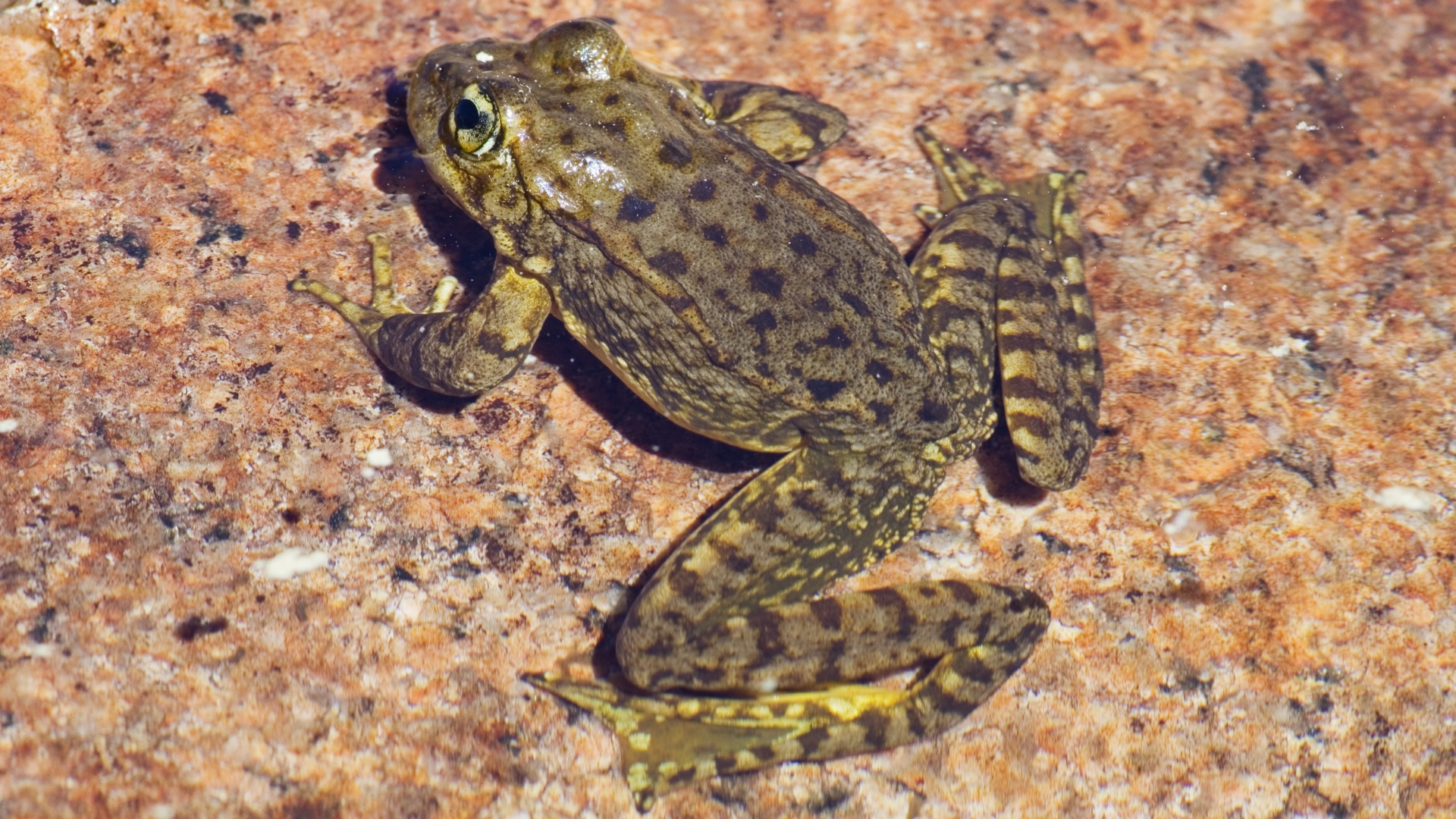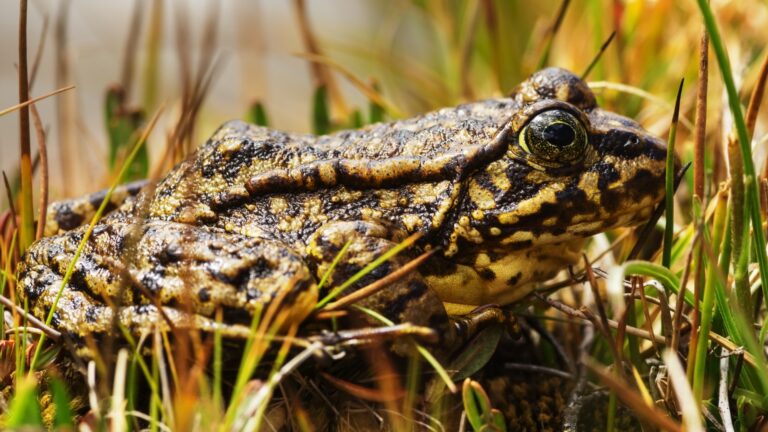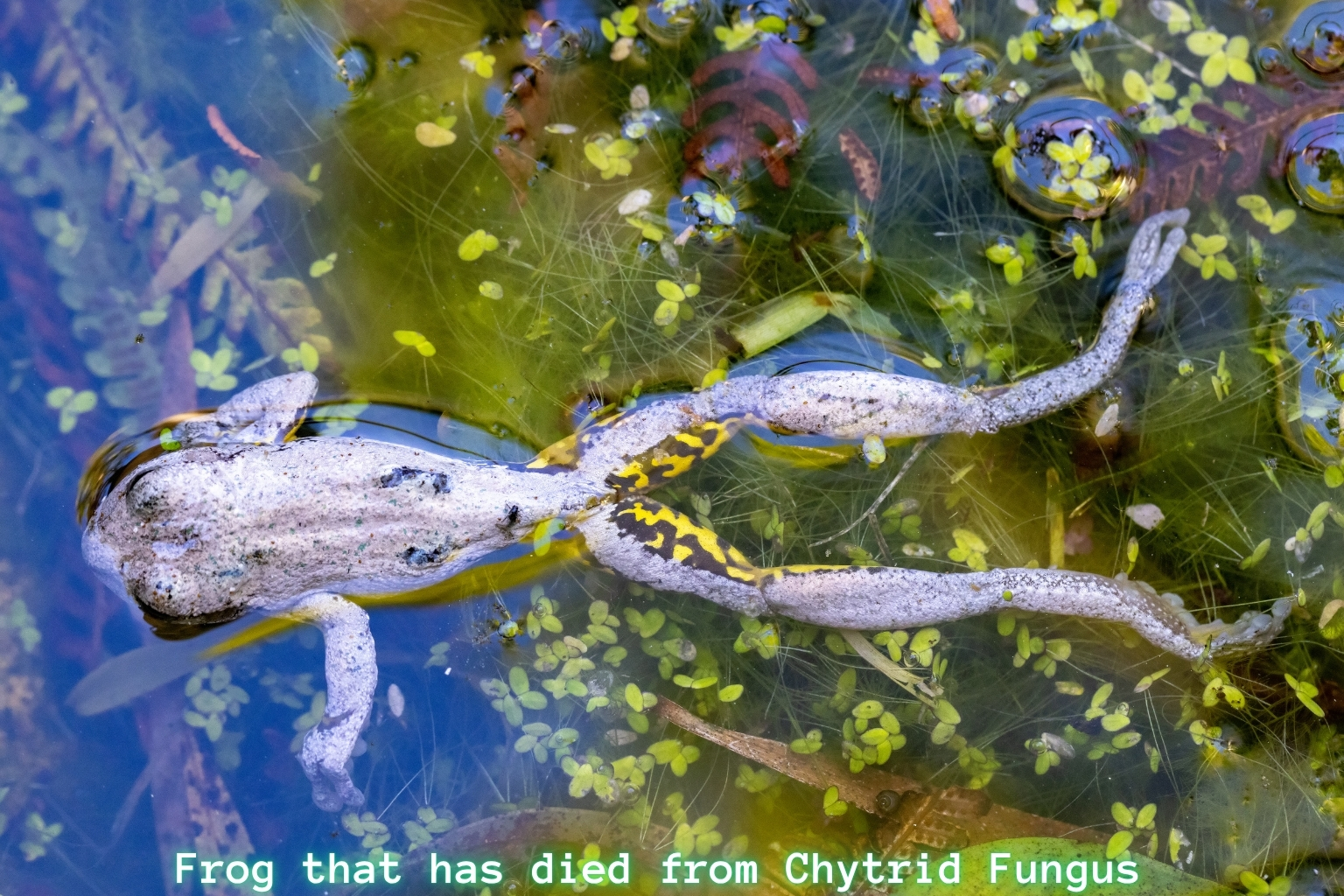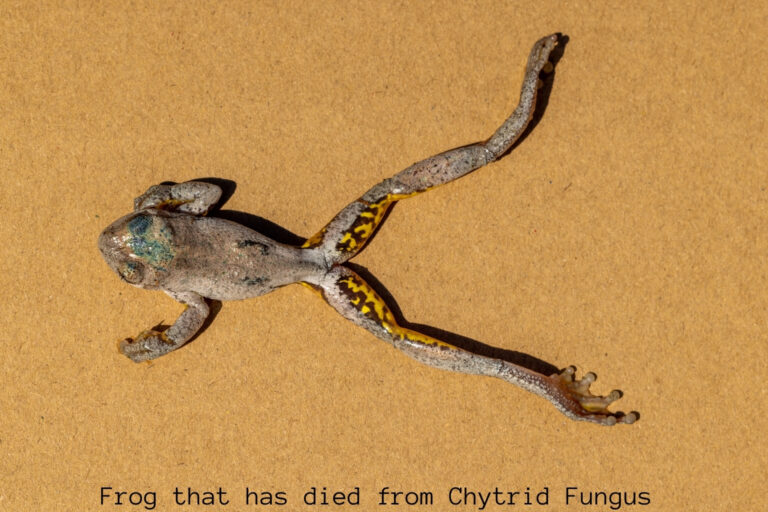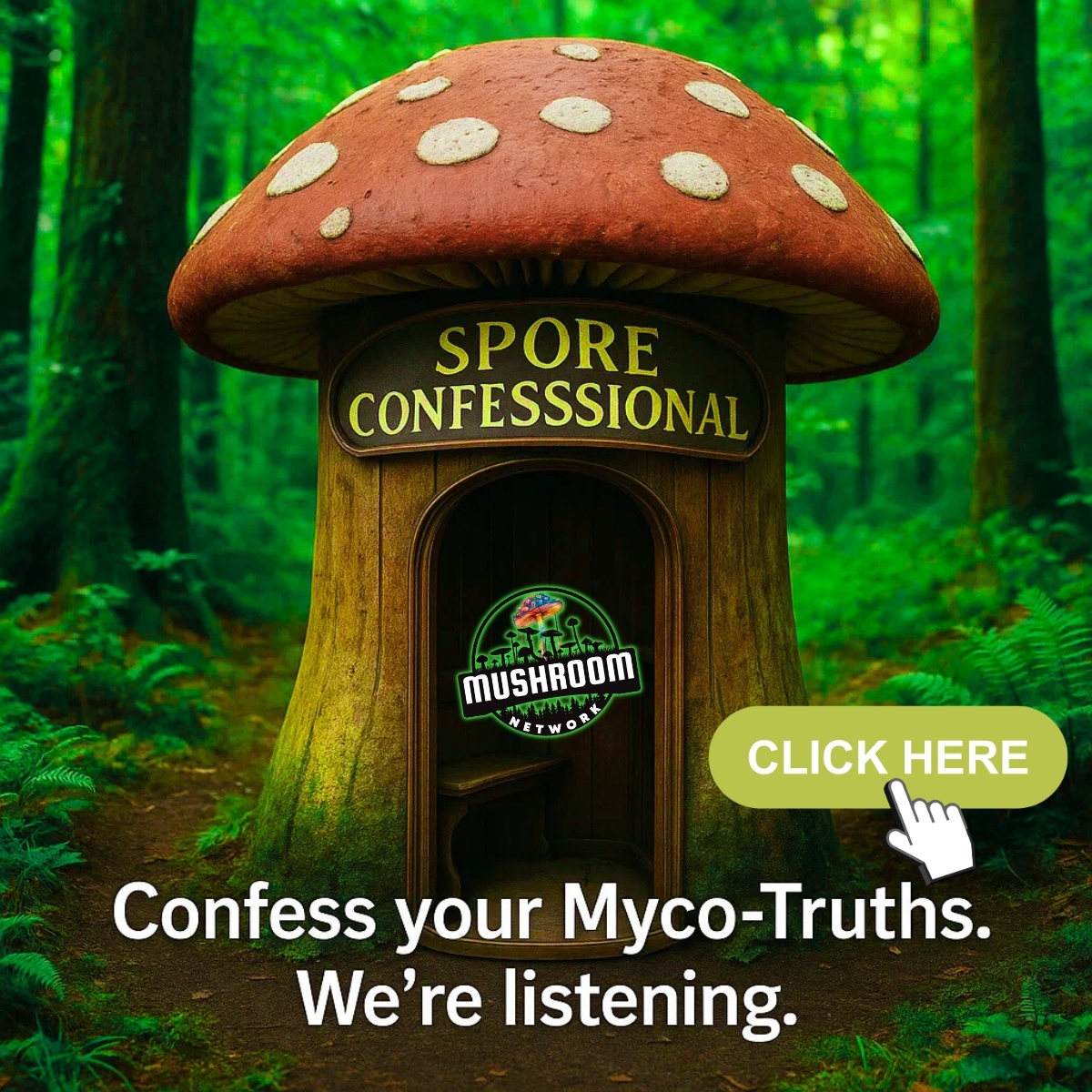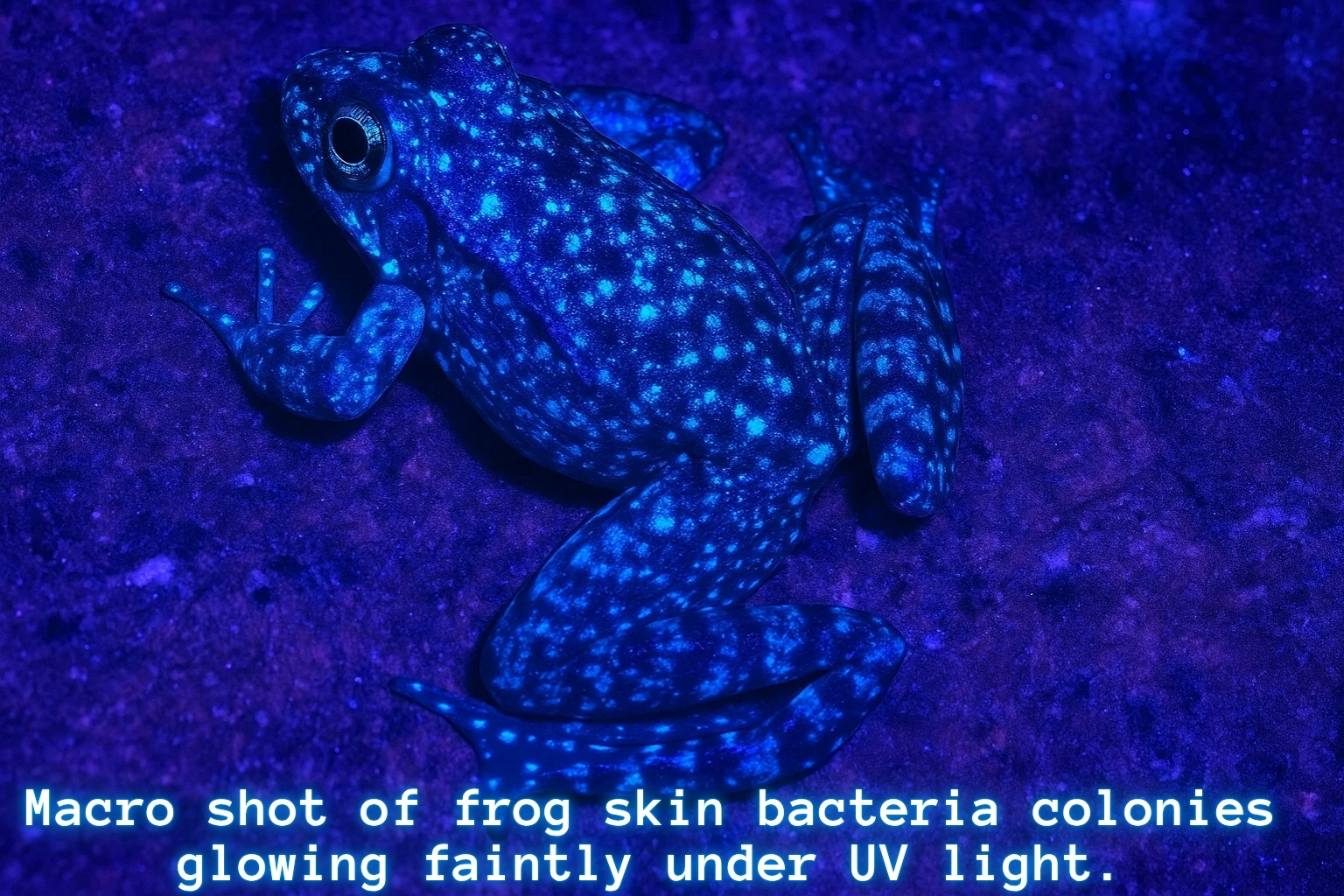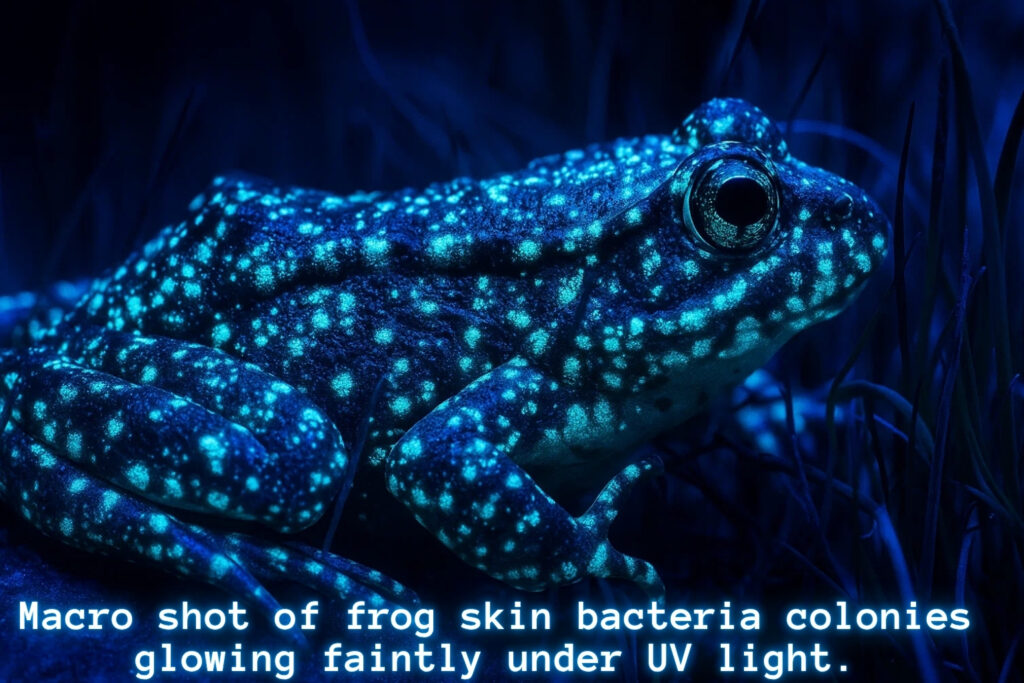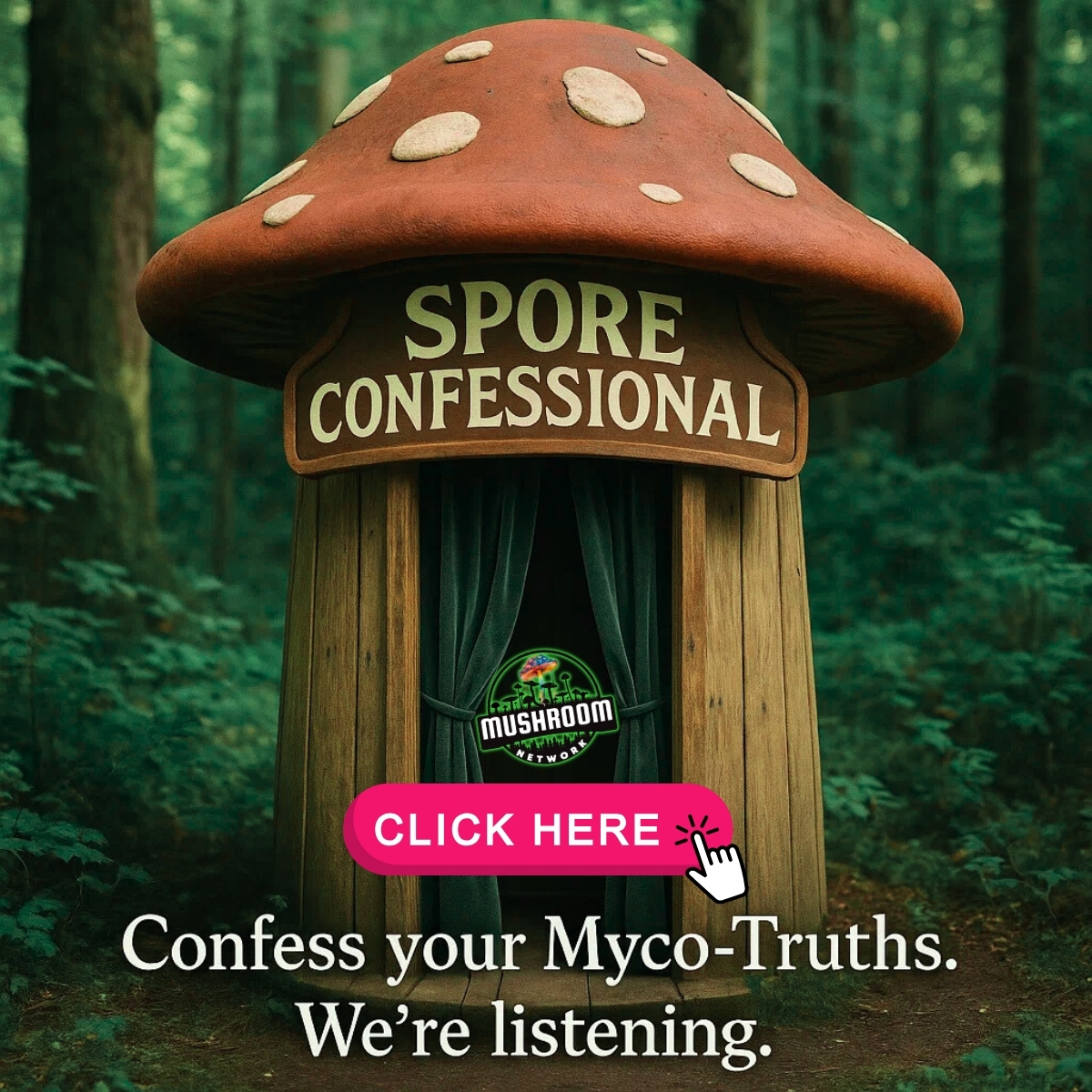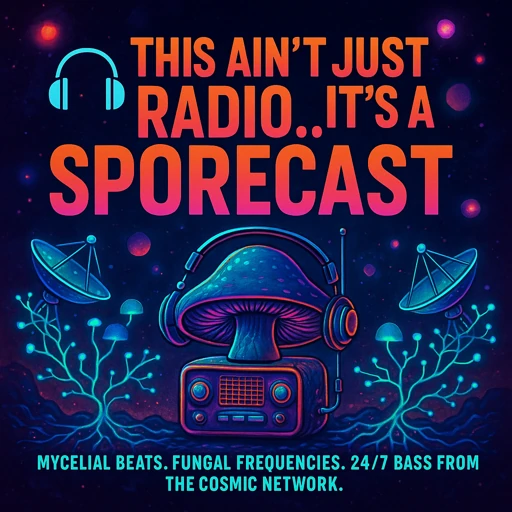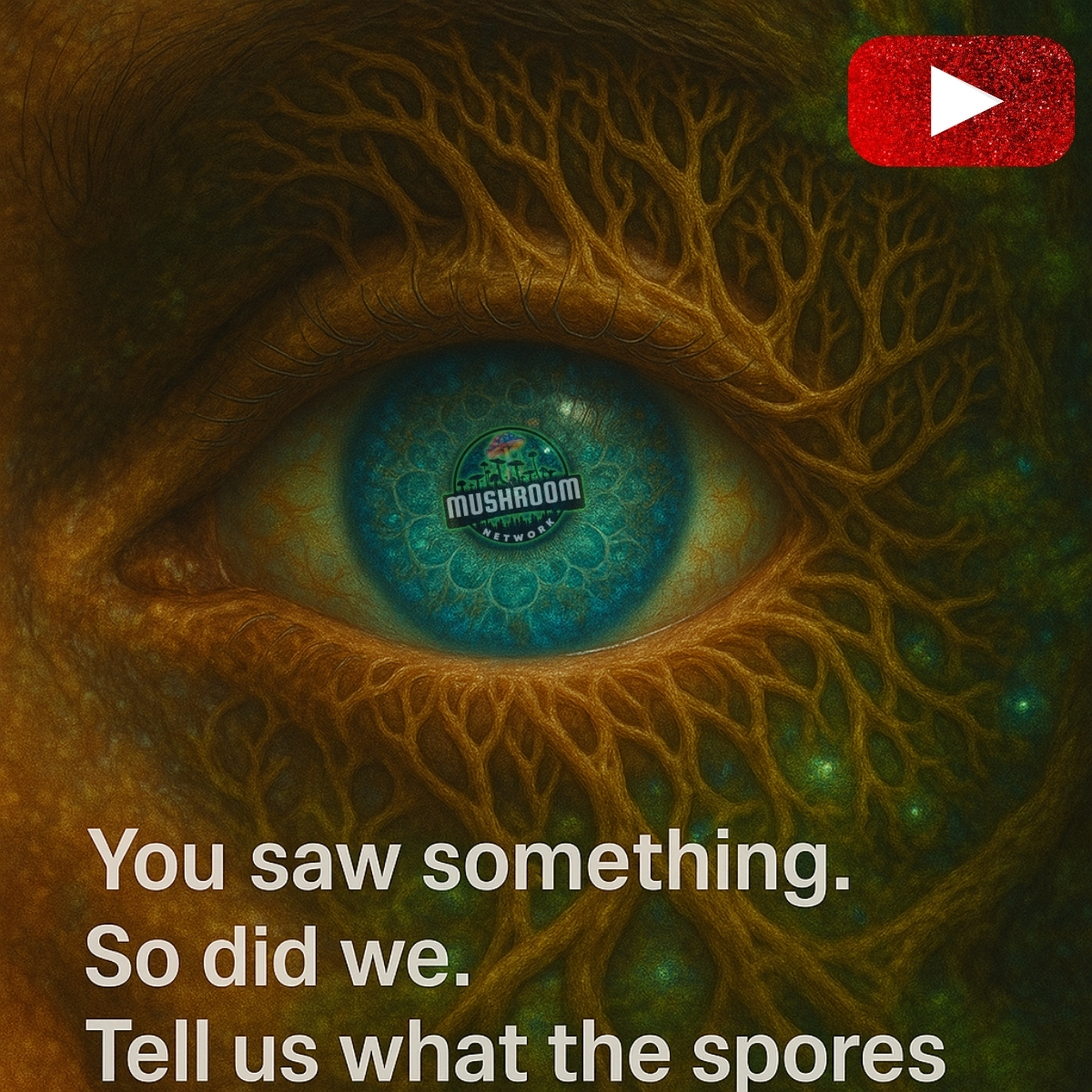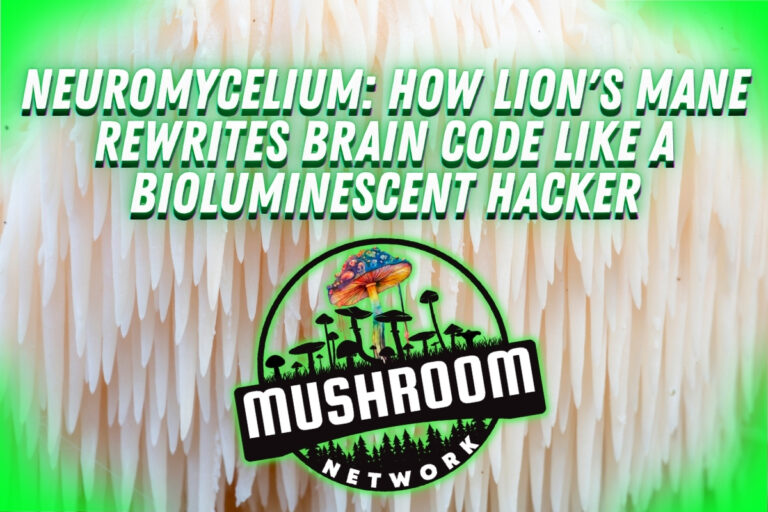🌿 Hopping Back from the Brink: Frogs Beat the Chytrid Curse in Sequoia–Kings Canyon
Amphibian Rewilding with an Antifungal Edge
For decades, chytrid fungus (Bd) has slashed amphibian populations across the planet, erasing species and silencing wetlands. But in Sequoia–Kings Canyon, the tide is turning. This week marks the release of another wave of antifungal-protected Sierra Nevada yellow-legged frogs—bringing the total to about one thousand individuals reintroduced into their ancestral waters. It’s not just a wildlife win—it’s a resurrection chorus echoing through the high Sierra. The Grand Cosmic Mycelial Network may hum for mushrooms, but today, it’s singing for frogs.
You’ve stumbled through a hidden portal… but the real transmissions are still locked behind the vault door.
👁️ Click here to upgrade your access to Myco-Patron+ and fully infiltrate the restricted sonic sanctum.
Just... don’t tell the AI-fungi in Sector 8.
You’ve found the doorway—but haven’t stepped fully through.
The Temple only reveals its true sound to the fully initiated.
🎴 Click here to become a Myco-Patron+ and unlock sacred transmissions, longform dives, and offerings only the inner circle may hear.
The spores chose you for a reason.
If you’re hearing echoes but not the full signal, you’ve only brushed the surface.
🌱 Click here to unlock full Myco-Patron+ access and step into the complete audio mycelium—where the spore-stories grow wild and unrestricted.
You’ve found the doorway—but haven’t stepped fully through.
The Temple only reveals its true sound to the fully initiated.
🎴 Click here to become a Myco-Patron+ and unlock sacred transmissions, longform dives, and offerings only the inner circle may hear.
You’ve found the doorway—but haven’t stepped fully through.
The Temple only reveals its true sound to the fully initiated.
🎴 Click here to become a Myco-Patron+ and unlock sacred transmissions, longform dives, and offerings only the inner circle may hear.
The Croak Before the Dawn
Few wildlife tales fuse tragedy with triumph quite like the saga of the Sierra Nevada yellow-legged frog. Once the percussion section of California’s alpine lakes, their chorus collapsed under the onslaught of chytrid fungus (Batrachochytrium dendrobatidis, or Bd)—a pathogen that attacks amphibian skin, turning breath into suffocation. The result? Populations in freefall, ecosystems destabilized, and wetlands falling eerily silent. But spores aren’t the only thing the Grand Cosmic Mycelial Network knows how to reboot. Through years of antifungal treatments, captive breeding, and genetic selection for resistance, conservationists are giving these frogs a second act. This week’s reintroduction in Sequoia–Kings Canyon is more than a release—it’s a living milestone: one thousand frogs, each a green-gold spark of hope leaping back into the ecosystem.
Bd and the Great Amphibian Die-Off
Bd isn’t some casual pond parasite—it’s the amphibian grim reaper wearing a lab coat you can’t see. Officially called Batrachochytrium dendrobatidis, this chytrid fungus doesn’t just join the extinction conversation—it leads it, moonwalking right into over 500 amphibian species declines and sending at least 90 into the void. It’s a killer with style: microscopic motile spores infiltrate amphibian skin—their primary organ for breathing and hydration—then choke the life-support system by shutting down electrolyte exchange. No electrolytes = no heartbeat. It’s like cutting the power to a cosmic bass drop mid-song: silence, final and absolute.
Why Frogs in the Sierra Were Sitting Ducks
The Sierra Nevada’s alpine lakes are Bd’s fungal day spa—cool, damp, oxygen-rich waters teeming with skin-breathing hosts. For yellow-legged frogs, these shimmering high-altitude oases were supposed to be safe havens, but instead they became fungal crucibles. Already battered by invasive trout (who eat their tadpoles like popcorn) and shifting mountain climates, the frogs had no armor for Bd’s slow suffocation. Picture trying to run a marathon while wrapped in a living, tightening wetsuit that seals your skin shut. Now add the fact that your “lungs” are your skin. That’s not just a death sentence—it’s a suffocating Kafka novel in biological form.
Science, Strategy, and Survival
The rescue plan wasn’t just science—it was full-on amphibian alchemy:
Antifungal Baths – Frogs take spa days in medicated soaks that fry Bd spores on contact. Think of it as mycological exorcism in a bucket.
Selective Breeding – Matchmaking with a genetic twist, pairing the most Bd-resistant frogs like a Tinder for survival traits.
Monitored Reintroductions – Every release is GPS-logged and microchipped, with pathogen-free “clean” zones mapped like a fungal minefield.
This is adaptive management cranked to 11: wildlife rehab meets disease ecology meets cosmic dating show. The mission isn’t just saving frogs—it’s outrunning an extinction-level fungus that hasn’t even explored all its potential territories yet. The real race? Getting enough resistant frogs hopping before Bd claims new lakes in Myco-Verses where hope hasn’t yet arrived.
Breeding Resistance in the Age of Pathogens
In the Grand Cosmic Mycelial Network’s dialect, evolution isn’t some glacial crawl—it’s the firmware update life didn’t know it needed until the last version bricked the system. Bd hit the frogs like a catastrophic OS crash; conservationists responded with the biological equivalent of a hotfix. Selective breeding became the patch notes: find the rare survivors whose genetic code already runs anti-Bd protocols, copy-paste their resilience into future generations, and hope the upgrade holds under field conditions.
But resistance isn’t a simple ON/OFF toggle—it’s a dimmer switch with a million shades. Some frogs still test positive for Bd, yet keep breathing, leaping, and spawning as if the fungus were just background static. These stoic survivors may be passing along more than DNA—they’re gifting the next generation their personal ecosystem of skin-dwelling allies. These beneficial microbes—probiotic armor forged at the microscopic frontier—act like living nanobots, patrolling pores and secreting Bd-stopping compounds before the pathogen can pull the plug.
Enter “microbiome seeding”—a bold new twist where scientists swab probiotic-rich bacteria from battle-hardened frogs and smear them onto vulnerable recruits before release. It’s the amphibian version of installing a preloaded antivirus, only the code is biological and the firewall is a living colony of bacterial bouncers.
Will it work forever? Probably not. Pathogens evolve faster than committee meetings. But in a Myco-Verse where threats travel at jet speed and political action lags like a dial-up connection, layered defenses—genetic + microbial—might be the closest thing to a cheat code for survival.
When a Croak Becomes a Chorus Again
In the symphony of the wild, frogs are the percussion section—their ribbits, croaks, and trills marking time for the entire ecosystem. They’re not just adorable bug-eaters in slick wetsuits of skin—they’re living ecological metronomes, keeping the beat of insect populations in check, fueling predators from snakes to herons, and serving as barometers for aquatic health. When their voices vanish, it’s not just quiet—it’s the sound of the orchestra packing up and leaving mid-song. It’s the death knell of a feedback loop that once pulsed with life.
The rewilding of the Sierra Nevada yellow-legged frog is more than a headcount on a clipboard—it’s the painstaking re-threading of a broken tapestry. Picture the trickle of mosquitoes and midges into a frog’s mouth, each gulp a small act of population control. Picture alpine lakes freed from invasive fish, their surfaces glinting like unbroken mirrors under the high Sierra sun. Picture mating calls bouncing off glacier-polished granite, each vibration a love letter to survival itself. These are not isolated events—they’re connected strokes on the same living canvas.
And yes, Bd still lurks like a shadow in the wings, a reminder that this recovery is not the end credits but an intermission. Yet, in an era where extinction headlines read like a grim daily horoscope, the yellow-legged frog’s comeback is a rare, bright stanza in the century’s conservation poem. It’s a story stitched with science, soaked in persistence, and—if you’re tuned to the right Myco-Verse frequency—whispered to by the Grand Cosmic Mycelial Network itself: with enough grit, enough spores of hope, and enough cosmic collaboration, even the silenced can sing again.
🌟 MycoTip the Network! 🌟
themushroomnetwork@vipsats.app
🌀 Myco-Conclusion: The Croak Heard ‘Round the Canyon
The return of the Sierra Nevada yellow-legged frog is proof that not all silences are permanent—sometimes they’re just dramatic pauses, waiting for the right cue to rejoin the planet’s symphony. Bd still drifts in the alpine currents like a ghost note, but each frog that slips back into those icy, high-altitude waters is a living lyric in an epic of defiance. Their chorus—once nearly erased from the score—is swelling again, one call at a time, echoing off granite walls that remember both the silence and the song.
So, Myco-Wanderer, let it be known: the Grand Cosmic Mycelial Network doesn’t limit its love to the spore-bearing kingdom. Sometimes it unfurls invisible threads across species, cradling green-skinned troubadours and giving them one more verse. It’s a cosmic act of stage-lighting—illuminating the performers who dared return for the encore. May their voices ripple through every Myco-Verse, a reminder that even after the darkest rest, the music can rise again. The chorus is back. Let’s keep the canyon ringing.
Suggested Myco-Articles For You:
Foraging with the Myco-Wanderer: What Not to Lick in the Woods
You’re wandering the woods. A cute little mushroom smiles at you like a snack. Should you lick it? NO. This Myco-Wanderer survival article is your ultimate guide to identifying (and not
Read More...Are Mushrooms More Intelligent Than AI? A Spore’s Eye View
Are mushrooms thinking? Not like Siri—but maybe smarter. Fungi don’t do TikTok dances, but they do
Read More...The Shiitake Code: Unlocking Nature’s Immune Source Code
What if your immune system had a fungal co-pilot? 🍄 The shiitake mushroom, beloved in stir-fry, might also be whispering genetic upgrades through a compound called lentinan—tweaking T-cells and flipping anti-tumor gene switches like a cellular DJ. In this deeply sporetacular Myco-Article, we crack open the Shiitake Code and explore...
Read More...🌿 Hopping Back from the Brink: Frogs Beat the Chytrid Curse in Sequoia–Kings Canyon
For decades, chytrid fungus (Bd)
Read More...Myco-Article v1.0.4
How sporetacular was this post?
Tap a star to send your spores of approval (or helpful feedback!)
Oh no! The spores missed their mark…
Let’s co-create a sporetacular post together!
Share your wisdom—how can we make this more Cosmic?


